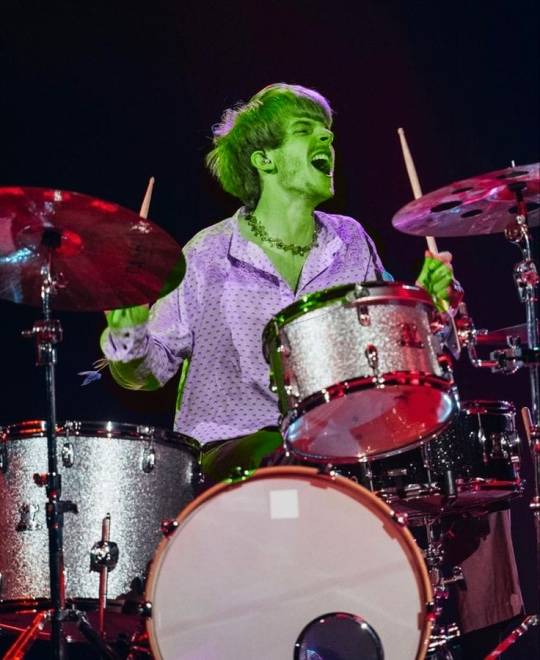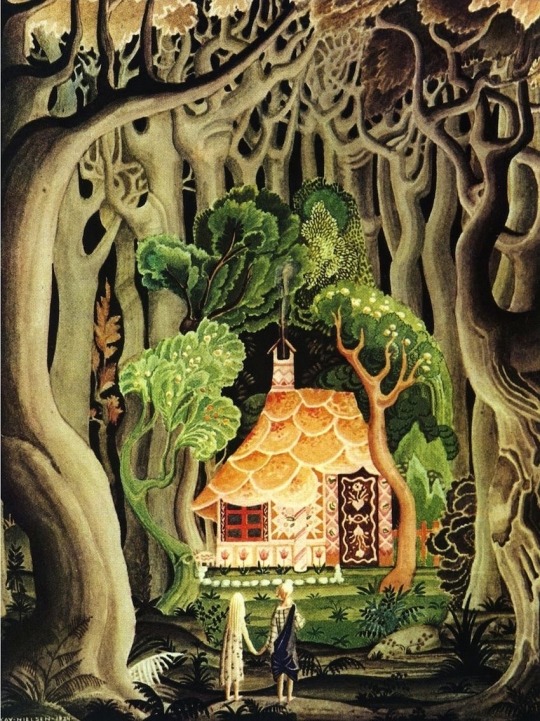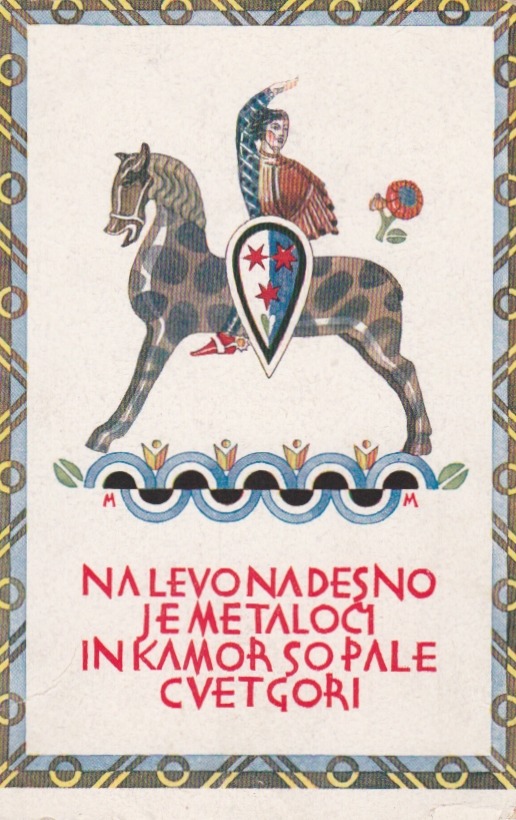#Jurjevo
Explore tagged Tumblr posts
Text
🌱Happy Sveti Jurij ('Saint George's Day') to Jure Maček who knows his Saint Name Day. Almost... 🤔
Check out the full Padova interview if you missed it!
👉youtu.be/8tOL4QQ2Edk
The article below is written in Simple Slovene, perfect for language learners, and explains all about Jurjevanje!

https://www.rtvslo.si/enostavno/spoznajmo-slovenijo/spoznajmo-slovenijo-jurjevo/620933
In Bela krajina (White Carniola) Jurjevo is celebrated on the 24th! Jurjevanje is a dance, music and song festival, featuring traditional Bela Krajina folk dances.

Bela krajina folk dances: https://www.youtube.com/watch?v=ADKz_P3-XVs
Or you can celebrate Sveti Jurij with us by listening to this evergreen hit by Magnifico!

youtube
All edits by @beeoftheanxieties
43 notes
·
View notes
Video
youtube
At the border between Slovenia and Croatia peculiar ritual with figure covered in greenery is known. Such figure is followed by several singers and together they form a procession that goes from door to door preforming songs and receiving various gifts. Nowadays, ritual is performed at st Georg’s day (Jurjevo) but it’s pre-Christian roots can be easily observed.
Text: Zelen Juraj došal je, pisan Vuzam prošal je, Iz zelene gore u to ravno polje.
Donesal je, donesal, pedalj dugu travicu, Pedalj dugu travicu, lakat dugu mladicu.
Juraj nije svaki dan već u ljetu jedan dan! Darujte ga, darujte Jurja zelenoga! Translation: Green Gorge has come, colorful Easter has passed, From the green hills into the plain fields. He has brought, span* long grass Span long grass, ell* long sapling. Georg isn’t every day, it is a specific day of the year! Bestow him, bestow the green Gorge! *both are archaic measurements and those should be English equivalents.
25 notes
·
View notes
Text
does anyone know any books or shows or movies with good slavic characters
please
#i just wanna see myself in a character#to read about them eating kulen and stressing about what highschool they will get into#or having a large family that half of speaks diffrent languages#to see them go to krijesne noći or the masquerade or celebrate jurjevo#i dont remember a slavic character that wasnt evil and/or made fun of for their accent#if a slavic character was neurodivergent and not a villain i would straight up cry#i want to have a character to realte to culturally :(#lancelot ranbles
3 notes
·
View notes
Text
There are hidden Pagan teachings in many of the fairy tales and I'll tell you what to look for hidden in Hansel and Gretel...
In it we see the Pagan cycle of the seasons: Hansel represents the youthful grain god known in Slavic lore as Jarillo, Lado or Kresnik, accompanied by Gretel, the maiden of spring who is the Slavic goddess known as Jarilla, Lada or Vesna. These deities were twin siblings and in their maturity become divine spouses.
To recognize the Pagan symbols of the seasons we need to look back at least 6,000 to 8,000 years. The original herding cultures had only two seasons running from May 1st/ May 5th (the Slavic St. George’s Day, Jurjevo, or Beltaine) to the end of October/beginning of November (Dzady or Samhain.) Later it divided into three seasons starting February 2nd, to the Summer Solstice and then end of October/ beginning of November (this is when the concept of the triple goddess and triple god developed, as a seasonal representation of Maiden, Mother, Crone, but very little is remembered today of the triple god.) Eventually settling out into the modern four seasons divided at the Spring Equinox, Summer Solstice, Autumn Equinox and Winter Solstice. This means that the concept of the “new year” started in the spring on May 1st/ May 5th, then became perceived as February 2nd, then on the Spring Equinox (March 15th) and eventually settled on the Winter Solstice, until the Romans moved it a few days to January 1st. This gives us a strange similarity of many springtime traditions to winter solstice traditions/ New Year celebrations. For now we’ll just focus on the springtime god and goddess represented by Hansel and Gretel.
These two siblings were sent forth because in the privation of winter they had no more food to eat in the house. Their father leads them into the forest and they build a large fire “as high as a little hill” where they fall asleep and their father leaves them. This is the Bel fires lit in the spring and alternately the Koliada or Yule fire of the Solstice. In the Russian variation, we can see the triple goddess, where the young Hansel and Gretel are sent by their mother to their old “grandmother” who lives in the forest. This elderly woman is the ancient goddess of winter, known in Slavic lands by the name of Baba Jaga, Morana or Mara.
The symbolism of the bread crumbs to try to lead the children back home connect to the grain god and the last “crumbs” from winter. When they are finally lost with no bread to guide them back, in some variations, the children are led by a “snow white” bird to the witch’s gingerbread house which the youths begin to eat. Understand that all birds, but especially white birds, were known to be messengers of the Goddess, while the honey-sweetened gingerbread represents the sacrificial food of the season offered to the deities. In some variations when the witch asks who is nibbling on her house, Gretel answers, “The wind, the wind.” This makes more sense when you know that the Spring Goddess’s name of Vesna, means “breeze,” as in the breezes that bring springtime. Eventually, the old witch catches the children, Hansel is put in a cage and Gretel must slave away doing chores. The girl eventually destroys the old witch by tricking her and shoving her into the oven.
The oven as a symbol of transformation is seen going back to the Baden culture dating around 3000 BCE. On my trip to Zagreb, Croatia, in the museum I observed small votive pottery sculptures of ovens that were found in temples and burials around the Slavic lands. Why ovens? This sacred image from five thousand years ago holds the transformative property of transmuting grain into life-nurturing bread. It is the same seasonal cycle that is mentioned in John Barleycorn and other Pagan songs, “Corn and grain, corn and grain, all that dies will rise again.” By “killing” the old witch of winter, Gretel releases young Hansel from his cage and the siblings carry off the witch’s “treasure” bringing the prosperity of spring! In some variations of the tale, they are led back home by a white duck (symbol of the Goddess) and in a Romanian version, the boy gets turns into a cuckoo, a bird that symbolizes the return of spring.
Gingerbread’s earliest variation was made with honey. This important ingredient is sacred to the God and Goddess going back to hunter-gatherer times. Honey cookies were made for the Winter Solstice in the round shape of the sun (and the spring holidays too, but that’s a whole ‘nother essay!) Later oriental spices were added and it became what is known as gingerbread, but the honey was the most important ingredient. The names reflecting this treat’s ancient origins would start with med (meaning honey), such as medenjaci in Croatia and medenjaki in Slovenia. The Czech and Slovak variation of pernik, or pierniczki in Poland, and pryaniki in Russia come from variations on pryany which means “spicy.”
(copyright 2018 Patricia Robin Woodruff)

#hansel and gretel#folktales#folklore#fairy tales#once upon a time#pagan#lore#ancient ways#SymbolSpeak#witch#wheel of the year#kay nielsen#illustration#art#hidden meaning
25 notes
·
View notes
Photo

Maksim Gaspari - Jurjevo (Vintage Postcard)
15 notes
·
View notes
Photo

Vesela pomladna epistola
Marjan Mušič(1904-1984), slovenski arhitekt in akademik, si je omislil zanimivo likovno upodobitev sv. Jurija, ki goduje 24. aprila. Po ljudskem izročilu je bilo jurjevo začetek pomladi in pastirski praznik. V tem času je sonce že toliko ogrelo zemljo, da so ljudje začeli hoditi bosi. Jurjevanje kot prazovanje jurjevega je bilo v različnih oblikah znano po vsem slovenskem ozemlju, zlasti pa v Beli Krajini in na Koroškem. Verzi na razglednici so vzeti iz pesmi Vesela pomladna epistola, katero je Oton Župančič leta 1906 objavil v literarni reviji Ljubljanski zvon, namenjena pa je bila pokojnemu prijatelju in pesniku Josipu Murnu-Aleksandrovu.
0 notes
Text
Gemini May Đurđevdan

By shirleytwofeathers
Đurđevdan is a major holiday for Roma from former Yugoslavia, whether Orthodox or Muslim. The various Balkan spellings (Herdeljez, Erdelezi) are variants of the Turkish Hıdırellez.
Ederlezi is the Gypsy name for the Bulgarian and Serbian Feast of Saint George. It’s celebrated on the 6th May, a holiday signalling the beginning of spring, occurring approximately 40 days after the spring equinox. This Spring festival is especially celebrated by Roma people around the former Yugoslavia (and elsewhere around the world), regardless of religious affiliation.
This holiday celebrates the return of springtime and is considered most important. The traditions of the Roma Durđevdan are based on decorating the home with flowers and blooming twigs as a welcoming to spring. It also includes taking baths added with flowers and washing hands with water from church wells. Also the walls of the home could be washed with the water. On the day of the feast it is most common to grill a lamb for the feast dinner. The appearance of music is also very important during this holiday. Aside from dancing and singing, traditional Brass bands are popular.
Đurđevdan in Serbian, Gergyovden in Bulgarian or Jurjevo in Croatian and Bosnian, “George’s day”, is a South-Slavic religious holiday, celebrated on April 23 by the Julian calendar (May 6 by Gregorian calendar). The feast of Saint George is attached to the tradition of celebrating the beginning of spring, and is a very important Orthodox Christian custom of honouring a family patron saint.
Saint George is one of the most important Christian saints in Orthodox churches. Christian tradition holds that St. George was a martyr who died for his faith. On icons, he is usually depicted as a man riding a horse and killing a dragon. Jurjevo is mainly celebrated in the rural areas of Croatia, mostly Turopolje and Gornja Stubica whereas every Đurđevdan is celebrated in many Serbian communities, but mainly in Serbia, Montenegro and Bosnia Herzegovina. In Croatian St. George is called Sv. Juraj while in Serbian he’s called Sveti Đorđe and in Bulgarian- Sveti Georgi.
In Croatia, the Catholic version of St.George’s day, Jurjevo is celebrated on April 23 by the Gregorian calendar. The tradition is mostly celebrated in northern Croatia, in Zagreb County. According to tradition this day marks the beginning of spring. The use of bonfires is similar to Walpurgis Night. In Turopolje, Jurjevo involves a slavic tradition where five most beautiful girls are picked to play as Dodola goddesses dressed in leaves and sing for the village every day till the end of the holiday.
Source: Wikipedia See also: Ederlezi at Gypsy Magick and Lore
https://shirleytwofeathers.com/The_Blog/pagancalendar/category/may-holidays/page/6/
0 notes
Text
When Pagan Slavs Meet Christian Knights at 'Zmajurjevo' Festival in Zagreb, Croatia
When Pagan Slavs Meet Christian Knights at ‘Zmajurjevo’ Festival in Zagreb, Croatia
ZmaJurjevo – is a full two-day cultural and educational event that revives early Croatian and medieval history and marks the beginning of the spring period of the year. Legend of the struggle of St. George and the Dragon is a story of eternal struggle and victory over the light over the darkness.
Jurjevo is traditionally marked by the burning of the effigy, while ‘ZmaJurjevo’ festival in Zagreb…
View On WordPress
4 notes
·
View notes
Photo
So much to address I don’t even know where to begin.
Jaryło: https://en.wikipedia.org/wiki/Jarilo
The only historic source that mentions this deity is a 12th-century biography of the proselytizing German bishop Otto of Bamberg, who, during his expeditions to convert the pagan tribes of Wendish and Polabian Slavs, encountered festivals in honor of the war-god Gerovit in the cities of Wolgast and Havelberg. Gerovit is most likely a German corruption of the original Slavic name Jarovit.
Up until the 19th century in Russia, Belarus and Serbia, folk festivals called Jarilo were celebrated in late spring or early summer. Early researchers of Slavic mythology recognised in them relics of pagan ceremonies in honor of an eponymous spring deity. In Northern Croatia and Southern Slovenia, especially Bela krajina, similar spring festivals were called Jurjevo or Zeleni Juraj or Zeleni Jurij (Green George), nominally dedicated to St. George, and fairly similar to the Jarilo festivals of other Slavic nations.
The pictures are of course not contemporary. From their condition and style they appear to be from the 19th and 20th centuries. Google Image Search suggests the first one is of some Slavic pagan deity. [EDIT: forgot to finish the thought here. 19-20C (or possibly 21C) Russia is very much a Christian, at worst in places post-Christian civilization. This means that these pictures are the product of a culture that has long referred to Jesus as its primary deity - the reverse of what this poster is trying to imply!]
The second one is by Andrey Shishkin of the god Dažbog. I have no idea if Dazhdbog and Jarilo are related at all. The two names never seem to appear together, though there seem to be quite a mess of numerous pagan Slavic sun gods.
That all aside, it may well be true that these pagan sun god motifs were intentionally appropriated by Christians as part of the Christianizing of the nation. That incorporating into the Christian faith been a recurring pattern everywhere.
“jesus was represented more or less accurately as an ethnically jewish arab man up until the reign of pope alexander vi”: This deserves three Google Image Searches:
First: https://www.google.ca/search?q=icon+of+christ+from+3rd+century&client=firefox-b-ab&dcr=0&source=lnms&tbm=isch&sa=X&ved=0ahUKEwiWh9CHzLDYAhVP8WMKHZusBKoQ_AUICigB&biw=1279&bih=770
Second: https://www.google.ca/search?client=firefox-b-ab&dcr=0&biw=1279&bih=770&tbm=isch&sa=1&ei=U-1GWuKYG4mKjwP0k62ICg&q=arabic+man&oq=arabic+man&gs_l=psy-ab.3..0l10.68019.69333.0.69496.10.9.0.1.1.0.78.595.9.9.0....0...1c.1.64.psy-ab..0.10.612...0i67k1.0.nCVHcw8WMA8
Third: https://www.google.ca/search?client=firefox-b-ab&dcr=0&biw=1279&bih=770&tbm=isch&sa=1&ei=me1GWverMpSYjwOVrYjICQ&q=lebanese+man&oq=lebanese+man&gs_l=psy-ab.3..0l10.52697.53425.0.53729.8.8.0.0.0.0.123.687.6j2.8.0....0...1c.1.64.psy-ab..1.7.599...0i7i30k1j0i7i5i30k1j0i8i7i30k1j0i13k1.0.JK82-qFvpz0
Do some of the icons resemble an Arabic man? Sure, probably. Skinny dude, dark hair, beard. But anything specifically Arabic? I don’t see it.
What’s being described as “Arabic” is simply “uhhh he’s from those Muzlim countries and so not Northern European so he’s got to be one of them Muzlim-faced peeplez” thinking. It is wrong. Here are two links that together form an excellent breakdown of why this is not only wrong, but also a form of oppressive, white-supremacist ethnic erasure.
That link also addresses Megyn Kelly’s remark: if Jews, Greeks and maybe various other Mediterranean peoples now and then (this is a constantly moving target) are “white” by whatever bizarre standard “white” includes at any given moment by any given speaker, then she could arguably be right. I’m not particularly interested in defending her claim, and personally think “white people” as a category should be put to rest permanently, but I’m sure she has said worse things that are more easily debunked without distorting something else.
As for the evolution of the modern image of Christ, here are the 3 basic examples from wiki. (I’m using wiki so much because I’m trying to type a Tumblr post here and don’t trust it not to eat this post while I spend any longer digging around.)
I can’t post after attaching images for whatever reason, so here are the examples:
Healing of paralytic, blurred face short hair: 3rd century
Catacombs of Rome, blurred face short hair: 3rd century
Long-haired skinny-faced Christ Pantocrator: 6th century
6th century = 500s AD. A thousand years before Borgia. If there’s any intentional semblance here it could only be that Borgia was depicted to look like Christ rather than the other way around.
(Also to consider:they’re both Mediterranean.)
That infamous “reconstruction” of “Jesus”: http://www.popularmechanics.com/science/health/a234/1282186/
Matthew's description of the events in Gethsemane offers an obvious clue to the face of Jesus. It is clear that his features were typical of Galilean Semites of his era. And so the first step for Neave and his research team was to acquire skulls from near Jerusalem, the region where Jesus lived and preached. Semite skulls of this type had previously been found by Israeli archeology experts, who shared them with Neave.
With three well-preserved specimens from the time of Jesus in hand, Neave used computerized tomography to create X-ray "slices" of the skulls, thus revealing minute details about each one's structure. Special computer programs then evaluated reams of information about known measurements of the thickness of soft tissue at key areas on human faces. This made it possible to re-create the muscles and skin overlying a representative Semite skull.
No information is given about the socioeconomic class, upbringing or other circumstances (age???) of the individual men to whom those skulls belonged. It is equivalent to reconstructing the face of Barack Obama by averaging the skulls of 2 Kenyans and an Irishman,* picked completely at random from the general adult male population, and making inferences about skin tone and hair based on one’s preconditioned beliefs. At best it is a thought experiment, and an exercise in “seeing Christ” in every man (though arguably one could do that even for Cesare Borgia!); at worst it is a misleading pop-science gotcha intended solely for anti-Christian iconoclasm.
* [EDIT: no, let’s make this analogy even more accurate - three Kenyans, completely glossing over Obama’s multiracial heritage just as we’re glossing over Christ’s multiracial heritage that was one of the points of the genealogy at the beginning of Matthew’s Gospel! [another edit to unpack that: consider the Biblical stories of Ehud and Ruth. It’s probably not the same Rahab, but that can’t be a coincidence.]]
Saint Nicholas: Because, as we all know, there are only white people and them darkskin people.
I admit I had to double-check to see where he was from, since I was getting my Church Fathers mixed up and Chrysostom and Augustine were was from Africa. [EDIT: But that said, incidentally here’s a near-contemporary picture of the Roman Ambrose of Milan.]
From wiki:
Nicholas was born in Asia Minor (Greek Anatolia in present-day Turkey) in the Roman Empire, to a Greek family[11][12][13] during the third century in the city of Patara (Lycia et Pamphylia),[14][15] a port on the Mediterranean Sea.[15] He lived in Myra, Lycia[16] (part of modern-day Demre), at a time when the region was Greek in its heritage,[15] culture, and outlook and politically part of the Roman diocese of Asia.[15]
Yes, he’s traditionally portrayed with fairly dark-brown skin. But to use language that suggests that therefore this man of explicitly recorded Greco-Turkish origin is of (sub-Saharan) African descent is the sort of leap of logic that is toxic to make a habit of.
tl;dr this thread is full of misconceptions that are at least as bad as what Megyn Kelly said, pls stop returning evil for evil

773K notes
·
View notes
Photo










M^3 Tim je ovaj vikend proveo na otvorenom u parku Ribnjak na Zmajurjevu. Ova manifestacija se održala u atmosferi srednjeg vijeka, povodom Jurjeva, te su i štandovi, radionice, ali i gastromonska ponuda bili u tom tonu. Domaći i strani glazbeno-scenski ansambli su pokazali svoje vještine pred znatiželjnom publikom, a pred sami kraj programa i Red čuvara grada Zagreba je održao svoju predstavu o svetom Jurju i njegovoj borbi protiv zmaja. Za doma smo ponijeli brojne uspomene i suvenire, a vama donosimo selekciju fotografija. :) --- M^3 Team spent this weekend in the great outdoors at Ribnjak attending Zmajurjevo. This manifestation was made with the middle ages as the main theme, due to the holiday Jurjevo, and all of the workshops, merch stands and food stands followed the same theme. Various domestic and foreign bands and actors showed off their skills in front of a very curious audience and during the very end of the show, the Red čuvara grada Zagreba performed their show about st. Juraj and his battle against the furious dragon. We brought home a bunch of souvenirs and good memories and we prepared a selection of photos for you to enjoy. :)
#lensblr#dark times#photography#zagreb#croatia#zmajurjevo#photographers on tumblr#nikon#event photography#dragon#knight#original photography
2 notes
·
View notes
Text
i jučer su bili izbori tu i sdp je izgubio žešće ahahaha po prvi u povijesti sela imamo hdzovsku vlast. frist teim bilo je zanimljivo gledati ljude kak se ponašaju i kak se stvari događaju i kak razni ljudi reagiraju na nove načine, ne znam, događalo se nešto i bilo je zanimljivo haha.
i onda smo se na random okupili u domu, odjebali feštu za jurjevo u lukavcu i marin čilić sami u selu
ubitačan dan tho, 4pm je, a još uvijek hazy mind, ne smijemo pušiti u takvim velikim skupinama pretjerujemo jer uvijek nekome nije dosta. draži mi je chill u autu nas dvoje troje šumica mir muzika i zvijezde na par sati, gadi mi se malo ovo
0 notes
Photo

Đurđevdan, Hederlezi ili Jurjevo - blagdan buđenja proljeća Romi danas proslavljaju Đurđevdan, svoj najveći praznik, kojim se slavi dolazak proljeća. http://ift.tt/2pQAoYW
0 notes
Video
instagram
#jurjevo #jurjevanje2016 #Črnomelj #janezweiss #Zelenijurij #folklora (at Jurjevanje v Beli krajini)
0 notes
Video
youtube
Kries - Lepi Juro kries nalaže
Lepi Juro kres nalaže Na Jurjevo, na Jurjevo Lepi Juro kres nalaže Kries nalaže, venčec vije Desnom rukom kres nalaže Levom rukom venčec vije Kries nalaže, venčec vije Na Jurjevo, na Jurjevo! Lepi Juro kres nalaže Na Jurjevo, na večer! Lepi Juro kres nalaže Na Jurjevo, na Jurjevo! Kries nalaže, veseli se Kano drvo, zeleni se! Kako drvo u zelenje Tako ljudi, na veselje! Kako ljudi na veselje Na Jurjevo, na Jurjevo! Lepi Juro kres nalaže Na Jurjevo, na večer! Kres nalaže, veseli se Na Jurjevo, na večer! Usred luga, zelenoga Na Jurjevo, na večer! Lepi Juro kres nalaže Na Jurjevo, na večer! Lepi Juro kres nalaže Usred luga, zelenoga Kres nalaže, veseli se Kano drvo, zeleni se! Kako drvo u zelenje Tako ljudi na veselje! Tako ljudi na veselje Na Jurjevo, na Jurjevo! Lepi Juro kres nalaže Na Jurjevo, na večer! Kres nalaže, veseli se Na Jurjevo, na večer Kres nalaže, veseli se Na Jurjevo, na večer.
11 notes
·
View notes